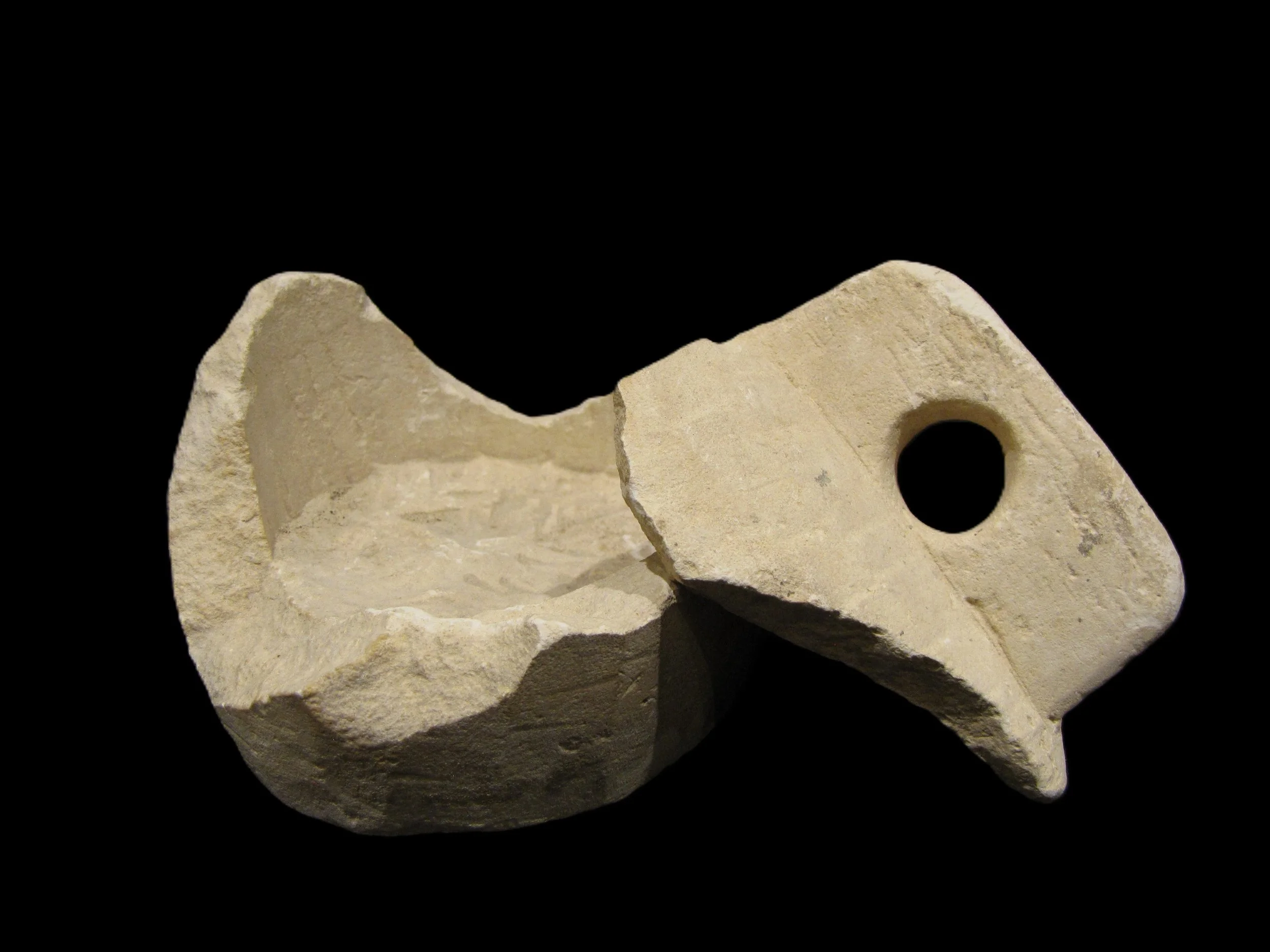Type: Priestly Stone Mug
Age: 100 BC-70AD
Culture: Roman Judea
Excevated: Archalaus Palace (east of Jericho)
Dating back 2000 years, these were common stone mugs used in Jewish households of the time. Such stone mugs were popular among Jews thanks to the purity rules. According to tradition, a pottery cup that had been contaminated by contact with a forbidden food had to be broken and discarded, but, according to the Jewish law, stone cannot become ritually impure. Jerusalem was a Center for the production of these stone vessels, crafted from a soft, chalky rock common to the region.
It is also believed that these stone vessels were used by the priests. Due to the same purity laws.
Type: Priestly Mixing Cup
Age: 100 BCE-70 CE
Era: Roman
Culture: Roman Judea
Excavated: Jerusalem
Reference: Yadin, Y. (1966) Masada Herod's Fortress and the Zealot's Last Stand. Photo on pg. 153.
Ritual Purity was of the utmost importance to the Priestly class of the Jewish Second Temple period. Since metal and pottery could be deemed impure, but stone could not (according to the Levitical Law), the temple priests and ascetics would utilize stoneware. This cup is unfinished, as are most of the others excavated thus far. The unfinished nature is likely due to the onset of the Jewish War against Rome in 70 C.E. Chisel marks are still clearly seen on the unfinished surfaces.

